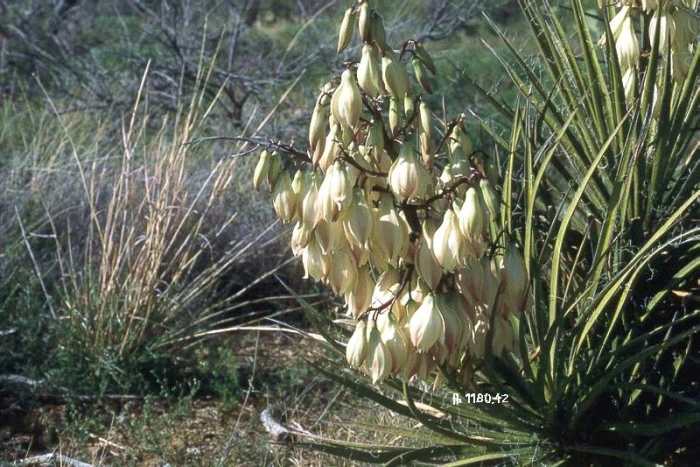Arizona Yucca
(Yucca arizonica)
Arizona Yucca (Yucca arizonica)
/
/

Rebou at de.wikipedia
CC BY-SA 3.0
Image By:
Rebou at de.wikipedia
Recorded By:
Copyright:
CC BY-SA 3.0
Copyright Notice:
Photo by: Rebou at de.wikipedia | License Type: CC BY-SA 3.0 | License URL: https://creativecommons.org/licenses/by/2.0 | Uploader: File Upload Bot (Magnus Manske) | Publisher: Wikimedia Commons |
















Estimated Native Range
Climate Requirements for Cedar Park, Texas
| This Plant | Your Site | Plant Suitability for Your Location | ||
|---|---|---|---|---|
| • Precipitation | 9" - 32" | 33" | Your precipitation may be too high for this plant. | Too high |
| • High Temp. | 80°F - 104°F | 95°F | Your summer temperatures are normal for this plant. | Excellent |
| • Low Temp. | 23°F - 41°F | 36°F | Your winter temperatures are normal for this plant | Excellent |
This plant may not grow well at your location - your precipitation is too high.
Summary
Yucca arizonica, commonly known as Arizona Yucca, is an evergreen succulent native to the Sonoran and Chihuahuan deserts. It typically grows to a height of 2-6 feet (0.6-1.8 meters) and a width of 2-3 feet (0.6-0.9 meters), featuring a rosette of stiff, sword-shaped leaves and a woody stem that may develop with age, giving it a tree-like appearance. The plant produces striking clusters of bell-shaped flowers that are primarily cream-colored, often tinged with purple, red, or white, and bloom in the spring. The flowers are particularly showy and attract a variety of pollinators.
Arizona Yucca is valued for its drought tolerance, architectural form, and the dramatic display of its spring flowers. It is commonly used in xeriscaping, rock gardens, and as a focal point in drought-tolerant landscapes. This plant thrives in full sun and requires minimal water once established, making it an excellent choice for low-maintenance gardens. It prefers well-drained soils and is adapted to survive in nutrient-poor conditions. While generally disease-free, it can be susceptible to root rot if overwatered. Gardeners should be cautious as the sharp leaves can be a hazard in high-traffic areas.CC BY-SA 4.0
Arizona Yucca is valued for its drought tolerance, architectural form, and the dramatic display of its spring flowers. It is commonly used in xeriscaping, rock gardens, and as a focal point in drought-tolerant landscapes. This plant thrives in full sun and requires minimal water once established, making it an excellent choice for low-maintenance gardens. It prefers well-drained soils and is adapted to survive in nutrient-poor conditions. While generally disease-free, it can be susceptible to root rot if overwatered. Gardeners should be cautious as the sharp leaves can be a hazard in high-traffic areas.CC BY-SA 4.0
Plant Description
- Plant Type: Succulent
- Height: 2-6 feet
- Width: 2-3 feet
- Growth Rate: Moderate
- Flower Color: Cream, White
- Flowering Season: Spring
- Leaf Retention: Evergreen
Growth Requirements
- Sun: Full Sun
- Water: Low, Very Low
- Drainage: Fast
Common Uses
Bee Garden, Bird Garden, Butterfly Garden, Deer Resistant, Drought Tolerant, Fire Resistant, Fragrant, Hummingbird Garden, Low Maintenance, Potted Plant, Rabbit Resistant, Rock Garden, Showy Flowers
Natural Habitat
desert habitats
Other Names
Common Names: Arizona Yucca, Thornber’s Yucca
Scientific Names: Yucca arizonica, Yucca baccata var. brevifolia, Yucca thornberi, Yucca confinis, Yucca baccata subsp. thornberi, Yucca treleasei
GBIF Accepted Name: Yucca baccata var. brevifolia L.D.Benson & Darrow